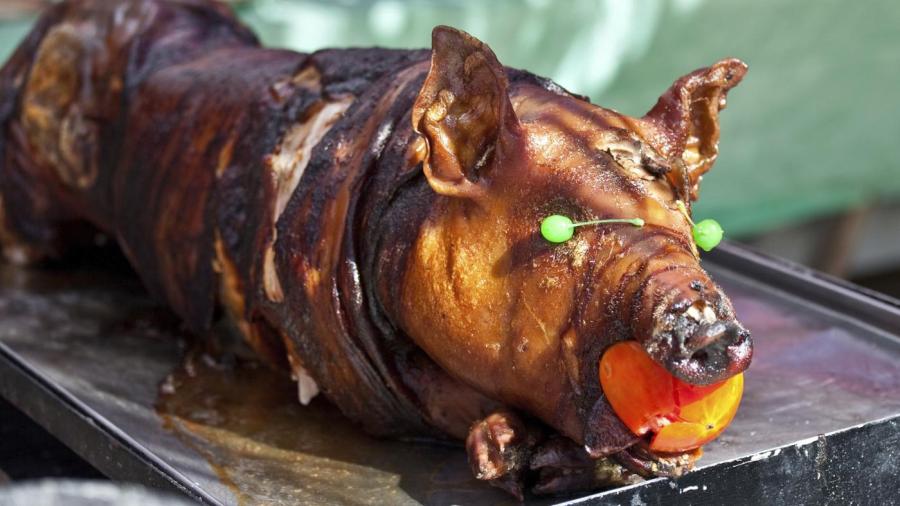
The image of an apple nestled in a pig’s mouth might seem peculiar at first glance. However, this seemingly odd tradition holds deep roots in ancient agricultural practices and symbolism. For centuries, farmers across various cultures have incorporated apples and pigs into their rituals and celebrations, imbuing them with meanings that reflected their hopes for prosperity and abundance. This article delves into the fascinating history behind this tradition, exploring the symbolic significance of both apples and pigs in ancient societies.
This exploration will begin by examining the individual symbolism associated with apples and pigs within agricultural contexts. We’ll then journey through historical harvest festivals where these symbols intertwined, culminating in the specific practice of placing apples in pigs’ mouths. Finally, we’ll analyze the cultural beliefs surrounding this tradition and its enduring legacy as a symbol of luck and abundance.
Apple Symbolism in Agriculture
Apples have long held a prominent place in human culture, symbolizing knowledge, health, and even immortality in various mythologies. However, within the realm of agriculture, apples represented something more tangible: prosperity and good fortune. Their association with bountiful harvests stemmed from their ability to thrive in diverse climates and produce abundant fruit year after year.
Farmers viewed apples as a gift from nature, a symbol of the earth’s generosity. They believed that cultivating apple trees brought blessings upon their fields and ensured a plentiful supply of food for themselves and their livestock. Apples were often incorporated into offerings to deities associated with agriculture, further solidifying their connection to fertility and abundance.
Beyond their practical value, apples also held symbolic significance in rituals and celebrations. Apple cider, made from freshly pressed apples, was considered a sacred beverage, believed to possess healing properties and ward off evil spirits. The act of sharing apple cider during harvest festivals symbolized unity and gratitude for the year’s bounty.
Pig as a Symbol of Prosperity
Pigs, with their reputation for being prolific eaters and breeders, were also deeply intertwined with agricultural symbolism. In many ancient cultures, pigs represented fertility, abundance, and prosperity. Their ability to convert meager scraps into substantial amounts of meat made them valuable assets to farmers, ensuring a reliable source of sustenance.
The pig’s association with wealth extended beyond its practical value. Pigs were often depicted in artwork and religious iconography as symbols of good fortune and material success. In some cultures, pigs were even sacrificed during rituals to appease deities associated with prosperity and ensure a bountiful harvest.
Ancient Harvest Festivals
Harvest festivals, celebrated across the globe, marked the culmination of the agricultural year and offered a time for communities to give thanks for their blessings. These festivals often involved elaborate rituals, feasting, and merriment, with symbolic acts designed to ensure continued prosperity in the coming year.
Apples and pigs frequently played prominent roles in these harvest celebrations. Apples were incorporated into offerings to deities, while pigs were sometimes sacrificed or roasted as a central part of the feast. The act of sharing food and drink during these festivals symbolized unity and communal well-being, reinforcing the interconnectedness between humans and nature.
Tradition of Placing Apples in Pigs’ Mouths
The specific tradition of placing an apple in a pig’s mouth likely emerged from the convergence of these symbolic meanings. By combining the symbols of apples (prosperity) and pigs (fertility), farmers created a potent representation of their hopes for a bountiful harvest and continued good fortune.
This practice may have originated as a simple ritualistic act, performed during harvest festivals or other agricultural celebrations. Over time, it evolved into a more widespread tradition, passed down through generations and ingrained in the cultural fabric of communities.
Luck and Abundance
The enduring popularity of this tradition speaks to its deep-seated connection with human desires for luck and abundance. The image of an apple nestled in a pig’s mouth continues to evoke feelings of prosperity and good fortune, serving as a reminder of the interconnectedness between nature, agriculture, and human well-being.
While the practice may seem quaint or even humorous today, it offers a glimpse into the rich history of agricultural symbolism and the enduring human quest for abundance.
Conclusion
The tradition of placing an apple in a pig’s mouth is more than just a curious custom; it’s a testament to the profound influence of agriculture on human culture and belief systems. By weaving together symbols of prosperity, fertility, and good fortune, this ancient practice reflects our enduring desire for abundance and our deep connection to the natural world.
